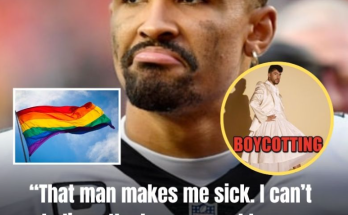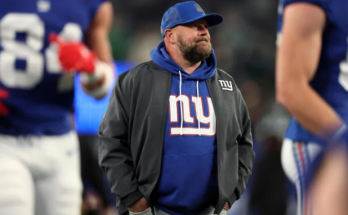
The Undertaker Death Rumors: The Truth Behind the Viral Hoax
In recent days, social media has been flooded with alarming posts claiming that legendary WWE icon The Undertaker, whose real name is Mark Calaway, has died or been hospitalized in Texas at the age of 60. Accompanying the headlines are dramatic photos showing Calaway lying in a hospital bed, emergency workers surrounding a casket, and mournful captions suggesting tragedy has struck one of wrestling’s most enduring legends.
However, after careful review of credible news outlets, WWE statements, and verified family or management sources, no official reports confirm that The Undertaker is dead or seriously ill. The viral posts are yet another example of the digital age’s growing problem with celebrity death hoaxes — stories that spread rapidly, fueled by emotional reactions and the power of viral sharing.
The Anatomy of a Hoax
The latest rumor follows a familiar pattern. A random page on Facebook or TikTok posts a “Breaking News” caption — often phrased dramatically, such as “SAD NEWS: The Undertaker’s Family Confirms He Is Gone”. These posts are paired with edited or old images, giving them a veneer of legitimacy. Within minutes, hundreds of people begin sharing them, expressing shock and sadness. Before long, the misinformation takes on a life of its own.
What makes this case convincing to some is the imagery. One of the most shared photos shows Mark Calaway lying in a hospital bed, seemingly unconscious. But this image has circulated for years and appears to be either staged or digitally altered. WWE fans may recall that The Undertaker has appeared in similar “injury” scenes as part of scripted storylines. Over the years, his character has been “buried,” “burned,” “resurrected,” and “killed” on-screen multiple times — blurring the line between fiction and reality for casual viewers.
Other images attached to the hoax show emergency responders handling a casket. However, those photos are unrelated to Calaway; they are taken from unrelated incidents used out of context to dramatize the false narrative.
The Power of False Headlines
Why do such stories gain so much traction? Experts on misinformation point to the psychology of social media sharing. People react strongly to celebrity news — especially when it involves beloved figures tied to their childhood memories. The Undertaker’s dark, mystical persona has made him an icon across generations of wrestling fans. Seeing his image next to the word “death” immediately triggers emotional responses and a desire to share the post “just in case” it’s true.
Unfortunately, this chain reaction gives hoaxes incredible reach before any fact-checking can catch up. By the time reputable sources clarify the situation, the rumor has already reached millions of people across multiple platforms.
No Statement from WWE or Family
As of now, WWE has made no announcement regarding any health emergency involving Mark Calaway. Nor have his wife Michelle McCool or other family members posted anything to suggest such a tragedy. In fact, Calaway has occasionally shared updates about his post-retirement life — focusing on family, faith, and selective public appearances. He retired from professional wrestling in 2020 after an illustrious three-decade career, closing the curtain on one of sports entertainment’s most iconic runs.
When actual news about celebrity passings occurs, reputable outlets such as BBC, CNN, ESPN, or WWE.com quickly release verified information, usually within minutes. In this case, none have reported anything of the kind. This strongly indicates that the viral “RIP Undertaker” story is completely false.
The Undertaker’s Enduring Legacy
Even though the current rumors are untrue, they remind the world of the enormous impact Mark Calaway has had on wrestling and pop culture. Born in 1965 in Houston, Texas, Calaway debuted in WWE in 1990 as The Undertaker, a dark, mysterious figure symbolizing death and supernatural power. Over the next 30 years, he built one of the most legendary careers in the industry — defined by his unmatched presence, loyalty, and storytelling ability.
His WrestleMania streak, an incredible run of 21 consecutive victories before being ended by Brock Lesnar in 2014, remains one of wrestling’s most memorable achievements. The Undertaker wasn’t just a character; he was a phenomenon — blending horror, mythology, and athleticism into a performance art that captivated millions.
Off the screen, Calaway is known to be humble and reserved, maintaining the mystique of his character for decades. After his retirement, he broke that silence through documentaries and interviews, reflecting on the physical and emotional toll of wrestling.
The Damage of Misinformation
While celebrity hoaxes might seem harmless to some, they can cause real emotional distress. Fans who see these reports experience genuine sadness, and family members or friends of the celebrity may feel invaded or hurt by the spread of lies. Moreover, false stories distract from real issues and create distrust in legitimate journalism.
The speed at which misinformation travels today is staggering. A 2023 MIT study found that false stories spread six times faster on social media than factual ones, largely because shocking or emotional content drives engagement. This is why fact-checking and critical thinking have become essential digital skills.
If you ever encounter such “breaking” posts, experts recommend checking the source of the information first. If it doesn’t come from a verified media outlet or official page, assume it might be false. Searching the celebrity’s name in Google News or visiting their official accounts usually reveals the truth within minutes.
Fans’ Responsibility in the Digital Age
As fans, the best way to honor figures like The Undertaker is by celebrating their legacy responsibly — not by spreading unverified rumors. Mark Calaway has earned the respect of millions through decades of hard work and physical sacrifice. He deserves truth and dignity, not sensationalized falsehoods.
It’s also worth noting that many fake “RIP” posts are part of clickbait scams designed to drive traffic to certain pages. Some may even include links that lead to malware or phishing sites. So beyond emotional harm, there’s also a digital safety risk involved.
The Bottom Line
Despite the emotional posts circulating online, The Undertaker is alive, and there is no evidence that he has been hospitalized or passed away. Until reputable sources confirm otherwise, any claims to the contrary should be treated as false.
This latest hoax serves as a reminder of how easy it is for misinformation to blur the line between fiction and reality — even for someone whose entire career was built on walking that very line. In the world of wrestling, The Undertaker was known as The Deadman. But in real life, Mark Calaway remains very much alive, enjoying retirement and the legacy he worked decades to build.
Before sharing that next shocking headline, take a moment to verify the facts. Legends like The Undertaker deserve better than to be buried by rumors — even if, ironically, that’s what his wrestling persona was famous for.


